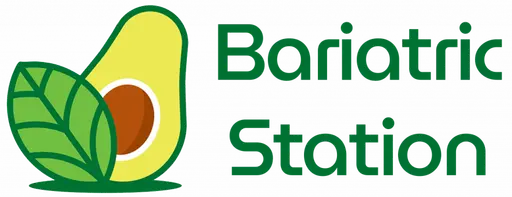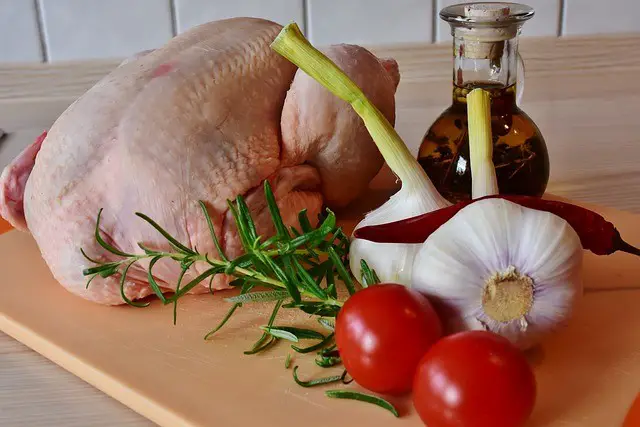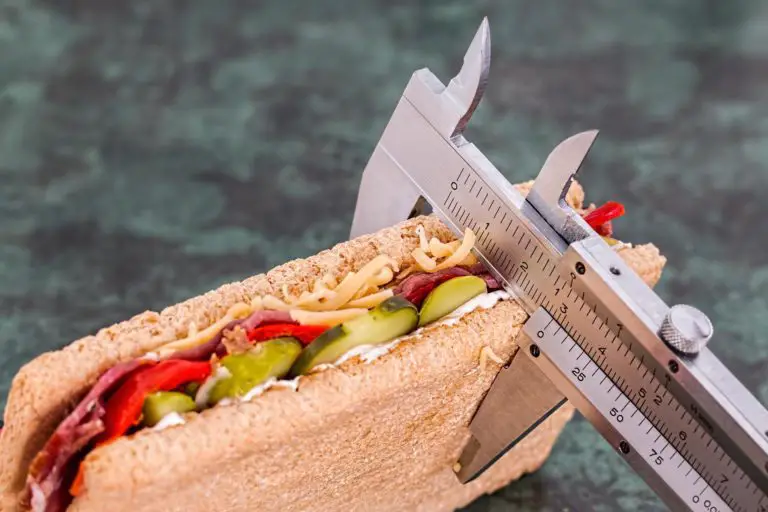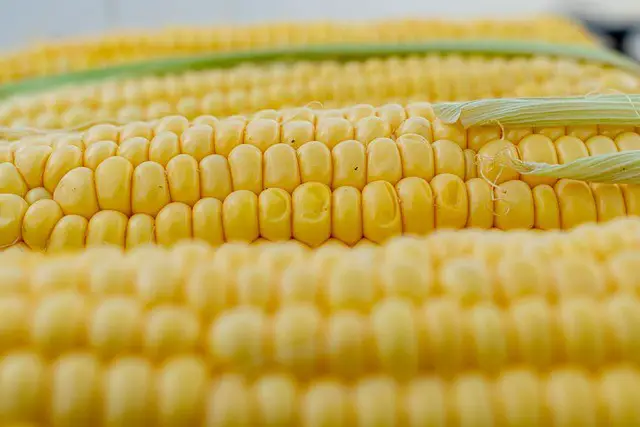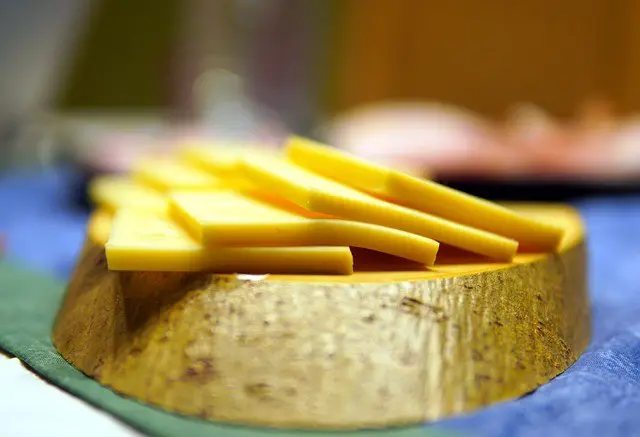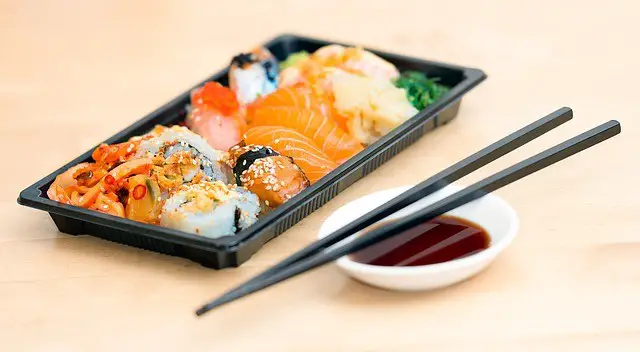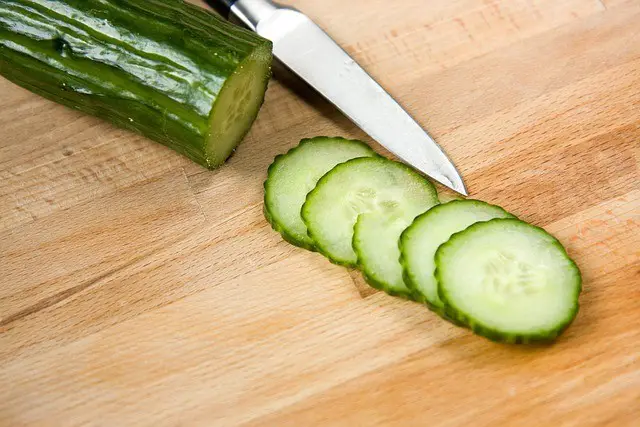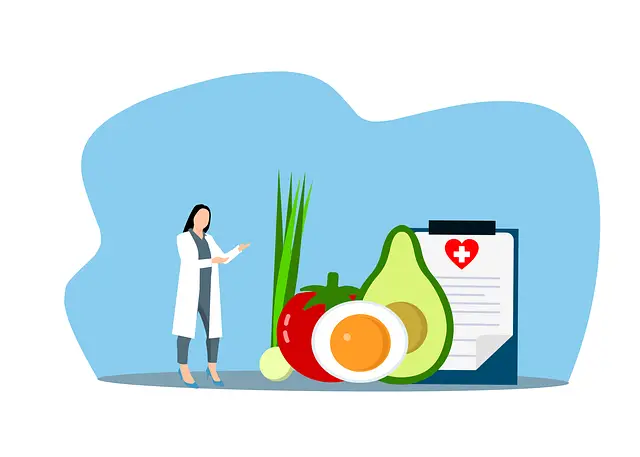Worldwide, we eat 197 million chickens a day. In the USA, chicken is consumed more than beef or pork. It is one of the most versatile meats making it the preferred meat option.
The ketogenic diet demands low-carb, high-fat, and moderate protein intake. When eating keto high-carb foods are avoided and so are sugary condiments and foods. This is because sugars contribute to the total carbs in food.
Animal proteins are the best source of protein compared to plant proteins on a low-carb diet. Plant proteins like legumes are high in carbs which can kick you out of ketosis. In this article, we will do an overview of the keto diet (consider it today’s keto reminder), discuss chicken nutritional facts, and answer all your chicken consumption questions on a low-carb diet. But most importantly answer the question, is chicken keto friendly?
What are the Basic Rules for the Ketogenic Diet?
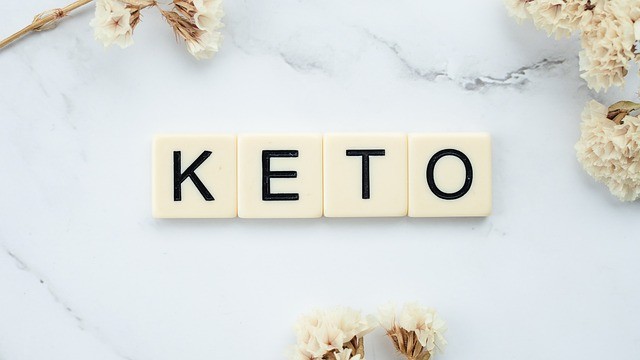
The basic rule of the keto diet is the consumption of a low-carb, high-fat diet. When eating keto foods, 70% to 80% of your calorie intake should be from fat, 25% from protein intake, and 5% from carbs. On a keto diet, the fewer carbs you consume the lower your net carbs. Net carbs are gotten from total carbs minus fiber. The carb limit on a keto diet is 50 grams of carbs per day.
Keto foods are low-carb and high in natural fats, triggering ketosis. Ketosis is the process of breaking down fat to produce ketones, your brain’s preferred source of fuel. Foods allowed on keto diets include:
Low Carb Veggies

Non-starchy vegetables are most appropriate on a very low-carb diet because they have low grams of carbs. Green leafy vegetables like spinach and kale, and other veggies like eggplant, bell peppers, cucumbers, asparagus, tomatoes, and brussels sprouts are examples of low carbs veggies. They are rich in vitamins C, K, and potassium all needed for the proper function of the body.
High-carb vegetables, those grown below the ground like sweet potatoes, Irish potatoes, yams, plantain, and parsnips are high in carbs and can spike your blood sugar. Excess carbs are converted to fat, preventing weight loss.
Healthy fats and oils
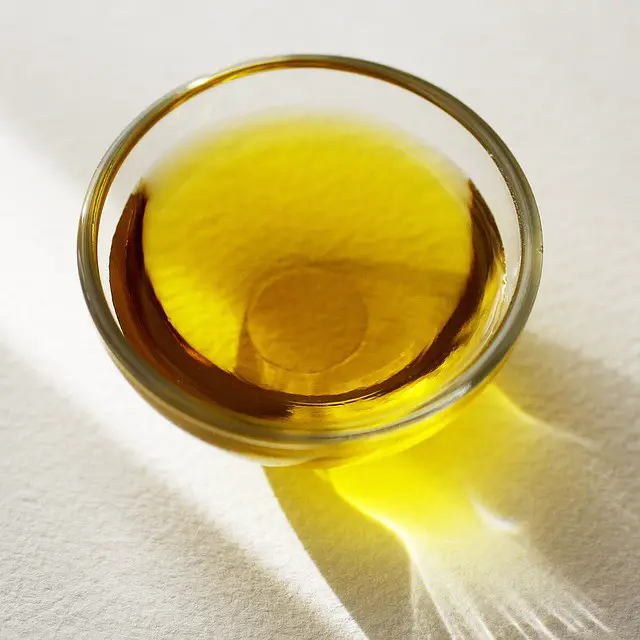
The type of fats in a food or oil determines whether it is healthy or not. Fats and oils rich in monounsaturated fat (MUFAs) and polyunsaturated fats (PUFAs) are considered healthy fat.
MUFAs and PUFAs reduce the risks of metabolic syndrome by lowering blood pressure, improving insulin resistance, promoting weight loss, and reducing inflammation.
Fats and oils rich in medium-chain triglycerides (MCTs) are also considered healthy because they can be broken down to produce ketone bodies.
Recent studies done to investigate the relationship between saturated fat and cardiovascular disease have found no significant evidence that consuming saturated fat causes cardiovascular disease. Consumption of nutritious foods with moderate amounts of saturated fat is considered healthy.
Oils like olive oil, coconut oil, sunflower oil, fish oil, avocado oil, flaxseed oil, and safflower oil are examples of healthy fats you can consume. Extra virgin olive oil is the healthiest oil because it is rich in MUFAs, PUFAs, and MCTs which are good for improving heart health. Fatty fish, nuts, and seeds are also good sources of healthy fats that reduce the risks of developing metabolic syndrome.
Avoid foods high in saturated fats like processed meats, and those high in trans fats like junk foods and fast foods. Replace these foods with those rich in healthy fat and those with moderate amounts of saturated fat.
Lean Protein
Meat and poultry meat are good sources of protein on a ketogenic diet. These keto foods have zero carbs making them the right choice when trying to lose weight.
Good sources of protein include beef, organic chicken, fresh meat, seafood, and other fatty fish. Bone broth from bones of white meat and beef are great sources of protein on your ketogenic diet.
High-cholesterol foods that raise low density lipoprotein (LDL) and decrease high density lipoprotein (HDL) have been associated with an increased risk of cardiovascular disease. The quantity of cholesterol does not affect your heart health as much if the type of saturated fat is healthy. If your food is high in good cholesterol then the risks are lower, and those with too much bad cholesterol are bad for your heart.
Omega 3 and 6 fatty acids are an example of healthy cholesterol your body needs to make cells and produce hormones. Pick dark meat with high levels of iron and fat. Frequent fish intake increases brain function, regulates blood sugar, and reduces the risk of chronic diseases.
Nuts and Seeds
Nuts like macadamia nuts, Brazil nuts, almonds, cashew nuts, walnuts, pecans, and pistachios are examples of keto-friendly foods. Example of seeds with low net carbs includes sesame seeds, flaxseeds, pumpkin seeds, and chia seeds.
Consumption of seeds and nuts has been associated with weight loss and preventing obesity by promoting the oxidation of stored fat.
Dark chocolate
Unlike white chocolate, dark chocolate contains 70% to 80% cocoa and lower amounts of sugar.
Unsweetened Coffee
You can have your regular cup of coffee on a ketogenic diet as long as it is black coffee, Americano, or Espresso coffee because it has zero carbs. Avoid mochas, lattes, cappuccino, and mochaccino because they are high in sugar which contributes to the grams of carbs you consume.
Full Fat Dairy Products
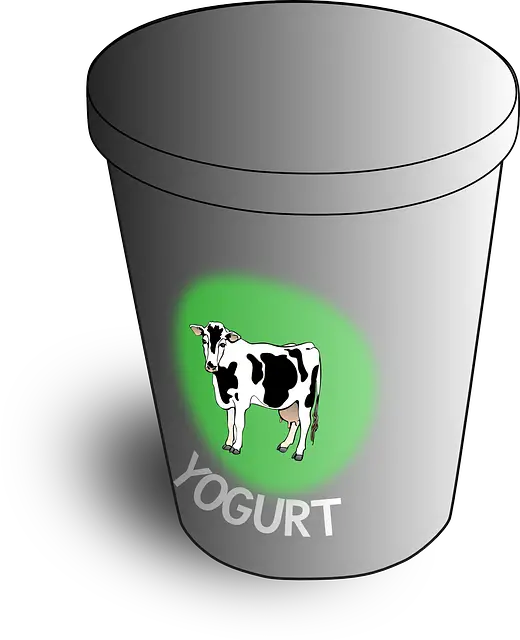
Another example of keto-friendly foods are high-fat dairy products like cheese, plain yogurt, ghee butter, and cream. Cheeses like cottage cheese have few grams of carbs which can increase the fat breakdown.
Greek yogurt consumption has been associated with reducing cardiovascular biomarkers. The high amounts of calcium in Greek yogurt promote body fat metabolism and satiety and reduce carb cravings and hunger which helps you lose weight.
You now have a reminder of the keto-friendly foods you can enjoy on a ketogenic diet. Here are a few things you cannot eat on the keto diet because they have many grams of carbs that can spike your insulin and blood sugar levels.
- Fruit juice: most fruits, except berries and avocados, are not allowed on the keto diet because they have high amounts of sugar.
- Whole grains: whole grains are too high in carbs for a low-carb diet. The net carbs in grain are high enough to kick you out of ketosis so should be avoided on a ketogenic diet.
- Starchy vegetables: Root veggies and legumes are not considered keto-friendly because they are high in starches that contribute to your net carbs.
- Sweeteners: Honey, maple syrup, and sugar will increase your blood sugar so stay clear of these when on a ketogenic diet. Excess sugar equals stored fat, which leads to increased fat mass gain rather than muscle mass.
- Processed meats: I did mention lean protein to be great for maintaining muscle mass, but some meats contain hidden carbs that can increase your net carbs intake.
Bacon, sausages, ham, deli meats, pates, and canned meat have higher net carbs than fresh meat from fillers like breadcrumbs and flavorings.
These meats are also high in sodium which can negatively affect your heart.
- Unhealthy fats and oils
Junk foods and baked products contain hydrogenated fats that are bad for your heart’s health. Canola oil, margarine, corn oil, and soy-based oils are also unhealthy because they are rich in the bad kind of saturated fat and trans fats.
Replace your oils with coconut oil for cooking and olive oil for dressing your salad and low-temperature cooking.
Okay so now that we have reminded ourselves of what is keto-friendly and what is not, let’s answer, is chicken keto friendly?
Is Chicken Keto friendly?
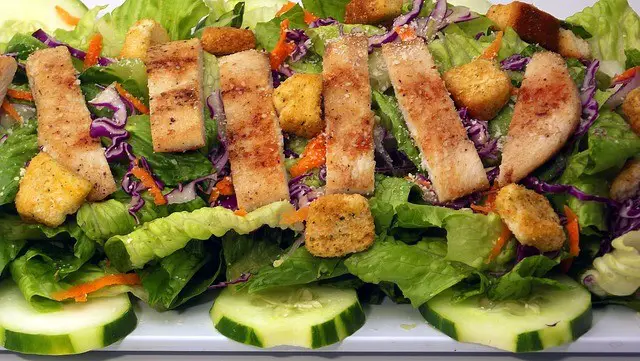
To decide whether chicken is keto-friendly, we need to know the carb count in a serving of chicken, its protein, and its fat content.
Chicken Nutrition Facts
According to the USDA, 100 g of chicken contains:
- Energy: 215 kcals
- Total carbs: 0 g
- Dietary fiber: 0 g
- Net carbs: 0 g
- Protein: 18.6 g
- Calcium: 11 mg
- Vitamin C: 1.6 mg
- Total fat: 15.1 g
- Saturated fat: 4.31 g
- Monounsaturated fat: 6.24 g
- Polyunsaturated fat: 3.23 g
- Trans fat: 0.097 g
- Cholesterol: 75 mg
Numbers never lie! Chicken is carb-free, translating to zero net carbs, which makes it most appropriate for a low-carb diet. The fact that it has zero carbs the glycemic index of chicken is zero and a glycemic load of zero. The carb-free nature of chicken does not affect your blood sugar.
In addition to this, chicken is high in protein, with 18.6 grams of protein, which takes longer to be digested and released to the bloodstream regulating blood sugar. Different parts of a chicken contain different amounts of proteins and fats:
- Chicken skin: 13.3 grams of protein and 9.08 g of fat
- Ground chicken: 17.4 grams of protein and 2.3 g of fat
- Chicken breasts: 20.8 grams of protein and 9.25 g of fat
- Chicken thighs: 16.5 g of protein and 16.6 g of fat
- Chicken drumstick: 18.1 g of protein and 9.2 g of fat
- Chicken wings: 17.5 g of protein and 12.8 g of fat
- Chicken leg: 16.4 g of protein and 16 g of fat
What Kind of Chicken Can I Eat on Keto?

Is chicken keto friendly? Yes, and the good news is, you can have dark and white meat on the ketogenic diet. It doesn’t matter the cut of chicken because the net carbs are low. There’s no significant difference in the grams of carbs from different cuts of chicken, the difference comes in with proteins and fats.
Because keto is a high-fat diet, the higher the amount of fat in the chicken cut, the more suitable it is for a ketogenic diet. Cooked chicken has more flavor if it’s chicken thighs because they have more fat content. The leanest part of a chicken is chicken breast.
How Much Chicken Can I Eat on Keto Diet?
Chicken is a good addition to your keto meal plan. The correct answer to this question depends on your calorie requirements and protein needs. Given that on a keto diet, you are expected to consume moderate protein, the recommended daily protein intake is 1.2 g to 2 g of protein per day.
Depending on your needs, you can consume protein on the higher or lower end. Individuals trying to lose weight need more protein to build muscle mass so higher amounts can be suitable for them. Note that although chicken is a good addition to your keto recipes, it should not be your only protein source. Variety is key!
Is KFC Chicken Keto?
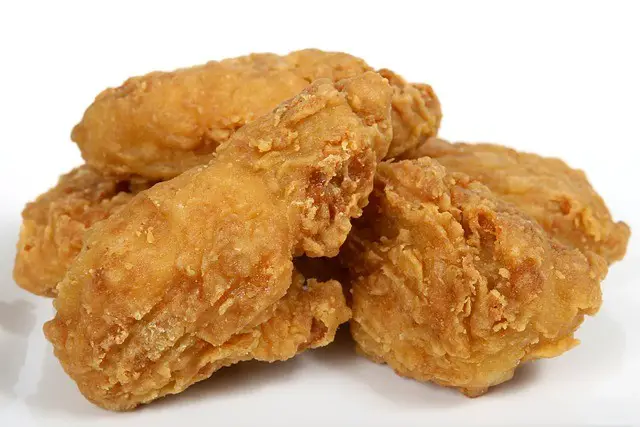
KFC fried chicken is not carb free because its batter adds about 8 g to 10 g net carbs. The coating of KFC chicken is made using flour, salt, pepper, milk, and eggs. Whole grain flour is high in carbs and can kick you out of ketosis. In a100 g of whole grain wheat flour contains 74.5 g of total carbs, 13.1 g of dietary fiber, and 61.4 g of net carbs. This carb content is too high on the keto diet.
A cup of milk has 12 g of carbs and is not allowed on a keto diet. The glycemic index of milk is 27 and the glycemic load is 2.7. The insulin index for whole milk is 90 meaning it can spike your insulin levels very fast.
The oil used to fry KFC chicken is canola oil and hydrogenated Soybean oil, both of which are not allowed on a keto diet. The grilled option is a better choice since it does not require any oil to cook the chicken.
I would recommend avoiding KFC chicken because the ingredients used to make the coating for this chicken are not allowed on a keto diet and can raise blood sugar.
How to Make Keto Chicken
There are a couple of ways you can prepare your chicken or ingredients you can use to make your chicken keto.
Chicken Cut
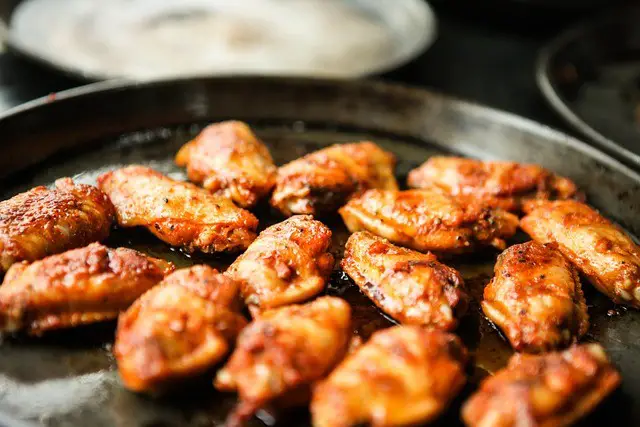
The higher the fat content in the chicken cut the better it is for a keto diet. Chicken legs, wings, and thighs are high in fat compared to other cuts of chicken.
Cook with Coconut Oil
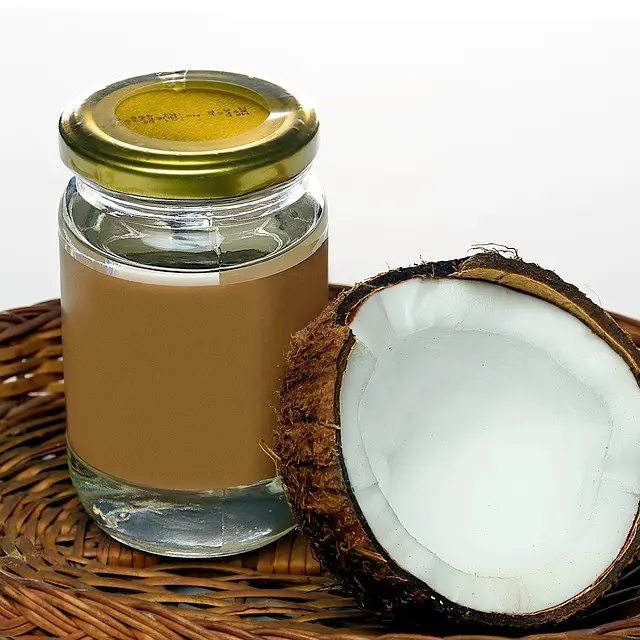
Chicken is low fat but cooking it in a high-fat oil will pump your food with the right amount of fats to trigger ketosis. Coconut oil is rich in MCTs which the body can break down to produce ketones for energy.
Use Low Carb Flour Alternatives
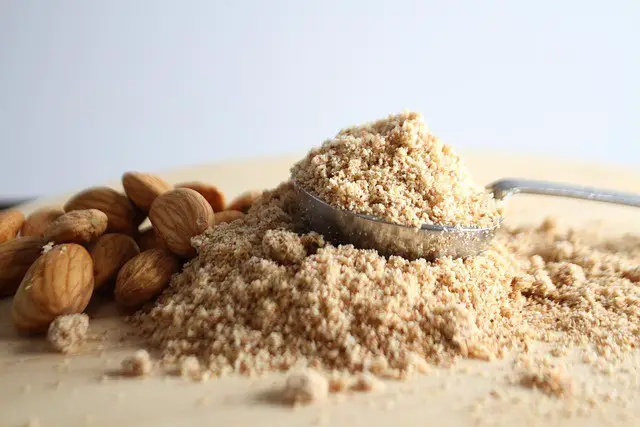
The wheat flour used to make the coating on KFC chicken may be high in carbs, but that doesn’t mean you can’t enjoy coated chicken for the rest of your life. Consider using low-carb flour alternatives like almond flour, coconut flour, walnut meal, and other nut flour.
These options are low-carb and high in fat helping your body to switch from glucose metabolism to fat metabolism. You can use ground chicken as an alternative for flour when making pizza crust. Combine your ground chicken, almond flour, eggs, and butter in a bowl, and do your magic! One keto chicken pizza coming right up!
High Fat Dairy Products
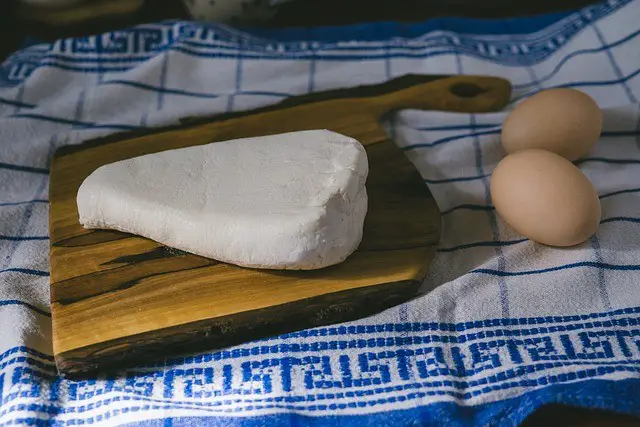
Is chicken keto friendly? On the low-carb aspect, yes. But to make it high-fat, you will need to combine it with other ingredients rich in healthy fats. When making your chicken coating, use low-carb milk alternatives like almond milk that will not spike your sugars.
You can also make chicken keto by stuffing it with cheese and non-starch veggies when cooking. The veggies will ensure your carb count remains low, while your cottage cheese will be the source of fat your meal requires to be keto. Plain Greek Yogurt can give your keto chicken recipes the creaminess they require while still staying within your carb limit.
Try Eggs with Chicken
Incorporate eggs into your chicken meals to increase fat intake. Eggs are rich in protein and fat making them ideal for the keto diet. Consuming eggs has been shown to trigger hormones that increase satiety.
Add your egg yolks into the batter for coating your chicken. Yolks are rich in antioxidants like lutein and zeaxanthin that reduce inflammation related to the development of the metabolic syndrome.
Olive Oil for Salads and Vinaigrette
Olive oil is the healthiest oil you can ever come across. Dress your salads with extra virgin olive oil for better flavor and to increase the fat content of your low-carb meal.
Final Thoughts
Is chicken keto friendly? Yes, it is. It is carb free which can help your body achieve ketosis. It may be low in fat but don’t worry there are ways you can increase the fat content of your chicken to make it more keto.
Tell me, which is your favorite keto chicken recipe? How do you make it different from other people? Let me know in the comment section below!
